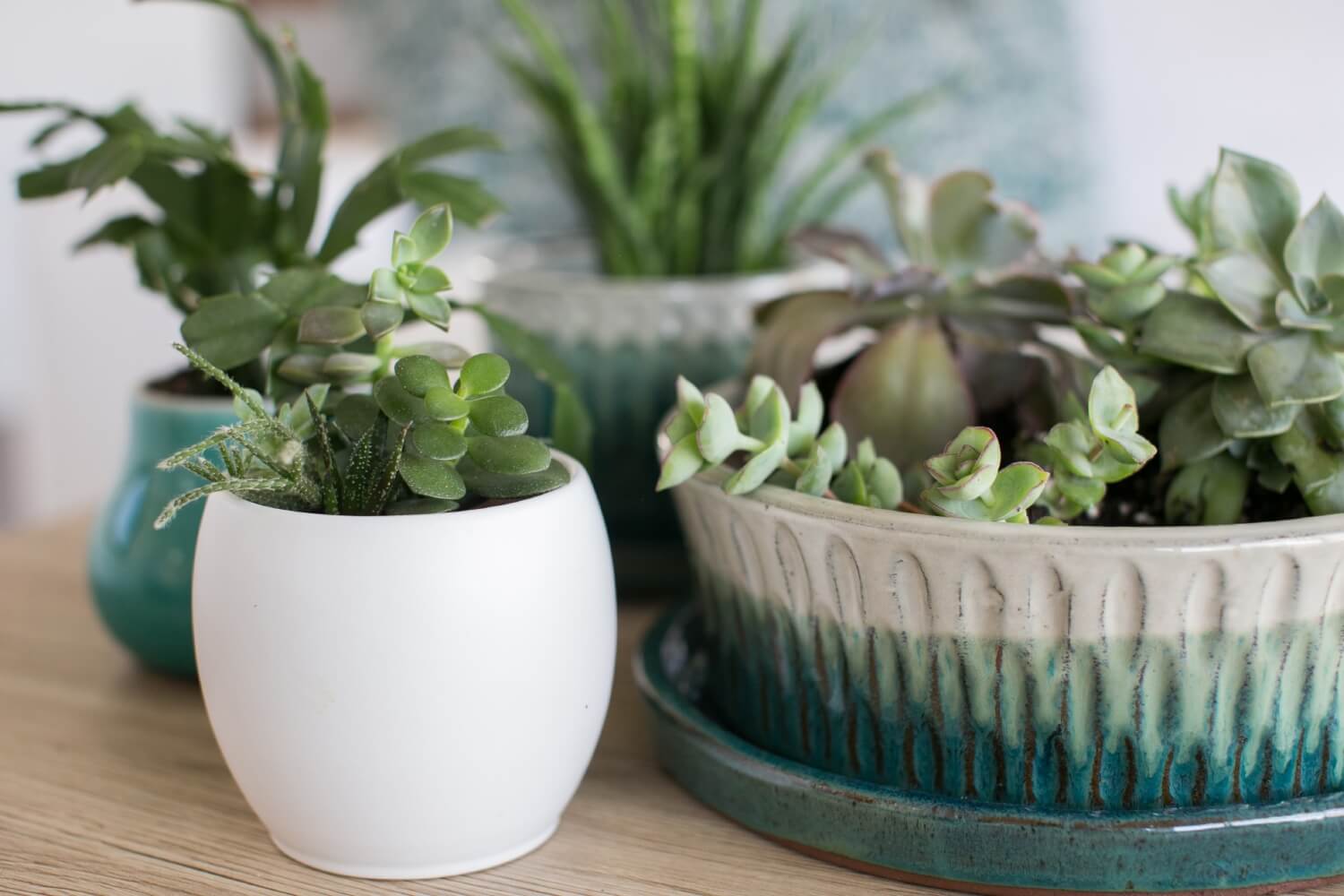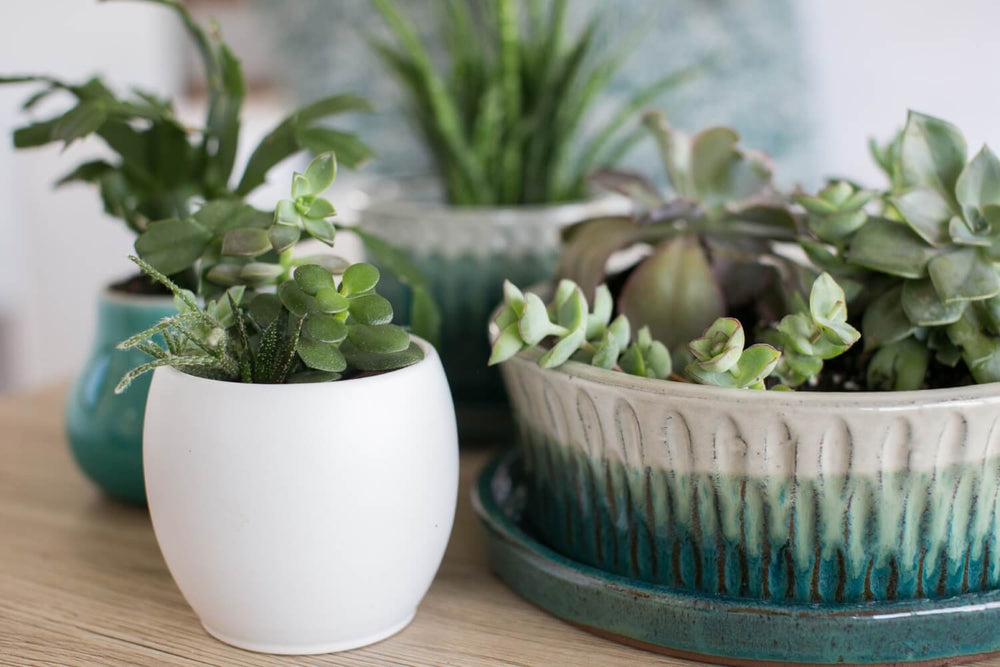
Succulents are wonderfully easy to grow. Still, as water-retaining plants, they have their quirks— and the right TLC can really help them flourish indoors. You can grow succulents outside, too, but they make excellent houseplants no matter where you live, so grab your favorite (or a few!) and pot up an interesting new piece of earthy decor.
Quick Guide to Growing Succulents
- Plant succulents indoors any time of year in a lightweight, well-draining potting mix.
- Water succulents when the top 2 inches of soil are dry.
- Mix succulents with similar care needs in a single pot for added appeal.
- Make sure your succulents are getting at least 6 hours of light a day.
- Begin feeding your succulents a month after planting for a boost of nutrition.
- Repot succulents every 2 to 3 years (earlier if they've outgrown their current container).
Planting Succulents
There are many types of succulents. Some you may know at first glance, like echeveria or aloe vera, while others may surprise you: Jade plant, snake plant, and kalanchoe are also succulents. If you have kids or pets, make sure your new succulent isn't toxic to them and place it out of reach if it is. Common succulents that can be harmful to pets include aloe, snake plant, and pencil cactus.
No matter the variety, you can plant succulents indoors at any time—here's how.
- Make sure the pot you've picked out has drainage holes. That's always a good idea, but especially so for succulents.
- Choose a container that's only about one-third larger than the root ball of your plant.
- The best soil for succulents in pots is one that's lightweight and well-draining, such as Miracle-Gro® Cactus, Palm & Citrus Potting Mix. Fill your container almost halfway full.
- Place your succulent inside, making sure the top of the root ball sits about an inch below the rim of the pot, and then fill in around it with potting mix.
- Water lightly so that the soil is damp but not drenched.
Planting different types of succulents together in the same container is also a nice way to pull together different colors, textures, and shapes. Follow the steps above, but make sure to check the plant tags for spacing requirements and specific care recommendations. The best mixed succulent pot will feature plants that look great in an arrangement but also have similar growth rates and watering needs.
Watering Succulents
Succulents thrive on near-neglect, but for plant parents, that can be hard to appreciate. Knowing how often to water your succulents, and how much to give them when you do, can help relieve any guilt for simply leaving them be most of the time. Here's how to embrace a "less is more" approach.
- Let the top 2 inches of soil dry out before adding any water.
- Direct the water toward the base of your plant.
- Give your plant a long drink, until water flows out of the drainage holes.
- Wait a few minutes and discard any excess water from the plant tray.
Caring for Succulents
Most succulents need a lot of bright light—at least 6 hours per day—but if your home is on the darker side you can still care for some of these incredibly easy plants. Just choose a low-light-tolerant variety, like string of tears, burro's tail, or snake plant, which do well in bright shade or 4 hours of morning sun. Regularly dust your succulent with a damp cloth (or a clean paint brush if it's spiky) to help increase its ability to take in light.
A month after potting up your plant, begin giving it a boost of nutrition. Regularly fertilizing succulents with Miracle-Gro® Succulent Plant Food will help them stand up to any pests. Plant food can also help speed up development among these notoriously slow growers.
Unsurprisingly, hardy succulents are mostly resistant to typical houseplant problems. That said, some bugs will try to take advantage of the water succulents store in their leaves and stems. If you spot a few mealybugs or scale insects, wipe them off with a cloth dipped in alcohol. For larger infestations, quarantine the plant, cut off the damaged section, and apply an insecticidal soap every week until the problem is gone.
If you notice a bacterial or fungal disease, cut back on watering by half. Also, consider where you've placed your plant—a humid bathroom might not allow your succulent to sufficiently dry out between waterings. Signs of overwatering include a lack of growth, reduced plant or leaf size, and shriveled leaves.
Repotting Succulents
You can repot a succulent when you buy it, but following that, you should let it settle in for a while. These plants grow slowly and only need their soil refreshed every 2 to 3 years, which is a good time to repot a succulent if it hasn't outgrow its container before then. Repot in spring, when your succulents are beginning a season of active growth.
To repot your succulent, follow the first 4 steps for planting in the section above. Skip the last step (#5), because you should wait to water succulents after repotting. A good rule of thumb is to hold off for 5 to 7 days so the roots can become reestablished.
Whether planting several varieties together in a statement-making centerpiece or singling out your favorite for a tiny-but-mighty desk accessory, growing succulents indoors couldn't be simpler. Get ready to sit back and enjoy indoor gardening made easy!




 Herbs
Herbs
 Vegetables
Vegetables
 Fruit
Fruit
 Flowers
Flowers
 Succulents
Succulents


